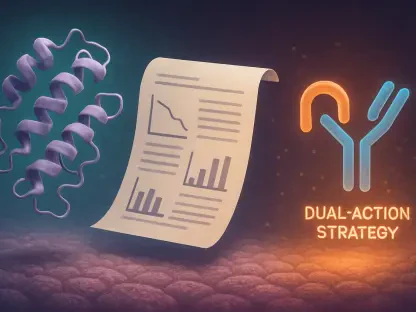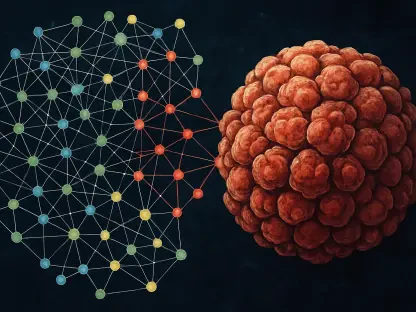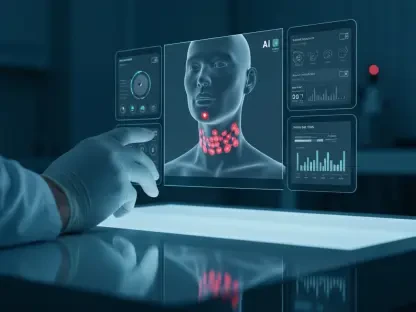In today’s interview, we dive into the fascinating world of neuroscience with Ivan Kairatov, a leading expert in biopharma with extensive experience in research and development. The discussion centers on understanding the concept of the “brain age gap” and its role in cognitive impairment. Through advanced neuroimaging and machine learning, recent studies have shed light on how our brain’s biological age might differ from our chronological age, influencing the way cognitive risk factors affect our mental functions.
Can you explain what a “brain age gap” is and why it’s significant in this study?
The brain age gap is essentially the difference between the chronological age of a person and the age that their brain appears to be based on biomedical imaging. This study highlighted its importance in understanding cognitive impairment because it acts as a biomarker. It helps researchers see the extent to which lifestyle and health factors might lead an individual’s brain to age differently compared to their peers, offering insights into potential cognitive decline.
How does a brain’s predicted biological age differ from its chronological age?
The predicted biological age is determined using neuroimaging techniques that assess structural features of the brain, like volume and blood vessel integrity. Chronological age is simply how many years a person has lived. Differences arise due to various factors, like genetics, lifestyle, and environmental influences, causing some brains to seem “older” or “younger” than their actual age, often with significant implications for cognitive health.
What machine learning tools were used to predict the brain’s biological age?
In the study, machine learning models were trained on brain scans to develop a predictive framework for the brain’s biological age. These tools analyze complex imaging data to identify patterns associated with aging, accounting for variations in brain structure that aren’t easily quantifiable through traditional methods.
How does having more cognitive impairment risk factors relate to cognitive performance?
The study found that a higher number of risk factors, such as high blood pressure and diabetes, correlate with diminished cognitive performance. These factors can catalyze or exacerbate brain aging, leading to declines in cognitive domains like memory and executive function.
What specific cognitive performance areas are most affected by higher risk scores?
Participants scoring higher on risk factors faced noticeable impacts in visuoconstruction and visuomotor speed. These are areas that rely heavily on the brain’s structural health, and any compromise through risk factors can have significant effects on performance.
Could you elaborate on how cerebrovascular disease affects the brain age gap?
Cerebrovascular disease contributes to the brain age gap by accelerating brain aging due to the damage it causes, like microbleeds and infarcts. This not only affects direct neural connections but also alters blood flow, exacerbating aging processes in the brain and widening the brain age gap.
How did the study determine the presence of cerebrovascular disease markers in participants?
Researchers used advanced imaging techniques to detect markers of cerebrovascular disease, such as microbleeds and infarcts. By assessing these markers, they could stratify participants based on the extent of disease presence, correlating with variations in brain age gap and cognitive performance.
What role does the brain age gap play in linking cognitive impairment risk factors to thinking and memory skills?
The brain age gap mediates the relationship between cognitive risk factors and performance by highlighting how structural aging impacts abilities. The study suggests that as this gap widens, it becomes more indicative of how these risk factors translate to declines in memory and thinking skills, particularly in adults with cerebrovascular diseases.
What does the study reveal about the mediation effect of the brain age gap on executive function and language?
Results indicated substantial mediation effects, with the brain age gap accounting for 34% of the influence on executive function and 27% on language abilities. This suggests that brain aging influences how cognitive decline manifests, particularly impacting complex cognitive processes.
How significant is the brain age gap in predicting a person’s risk of cognitive decline?
The brain age gap serves as a strong predictor of potential cognitive decline, functioning as a biomarker that identifies individuals at high risk due to accelerated brain aging. By gauging this gap, interventions can be better tailored to maintain cognitive health in at-risk populations.
Why was the study population limited to Southeast Asian individuals, and how could this impact the results?
The study focused on Southeast Asian individuals to explore population-specific dynamics in brain aging and cognitive impairment. While this provides valuable insights for that demographic, it limits the generalizability of the findings to other ethnic groups, who may experience different risk factors and aging processes.
What are the limitations of the study regarding exercise, diet, and genetic markers for Alzheimer’s?
The lack of comprehensive data on exercise, diet, and Alzheimer’s genetic markers means potential influences on brain aging and cognition weren’t fully explored. Consequently, the conclusions are somewhat restricted to the identified factors, leaving room for future research to fill these gaps.
How do you envision this research impacting future studies or treatments for cognitive impairment?
This research lays the groundwork for using brain age gaps as diagnostic and prognostic tools, fostering the development of personalized interventions. Future studies could leverage these findings to devise strategies that target brain aging directly, potentially slowing cognitive decline.
What were the challenges faced in gathering medical histories and brain scans of participants?
One significant challenge was ensuring the accuracy and completeness of participants’ medical histories, which required meticulous attention during interviews and data collection. Similarly, achieving consistent quality in brain scans posed technical challenges, necessitating sophisticated imaging setups and expert analysis.
Can you highlight the support and funding received for this study?
The study received valuable support from reputable institutions, including the National University of Singapore, the Singapore National Medical Research Council, and the Ministry of Education. This backing was crucial in securing the resources and expertise needed to carry out such comprehensive research.









